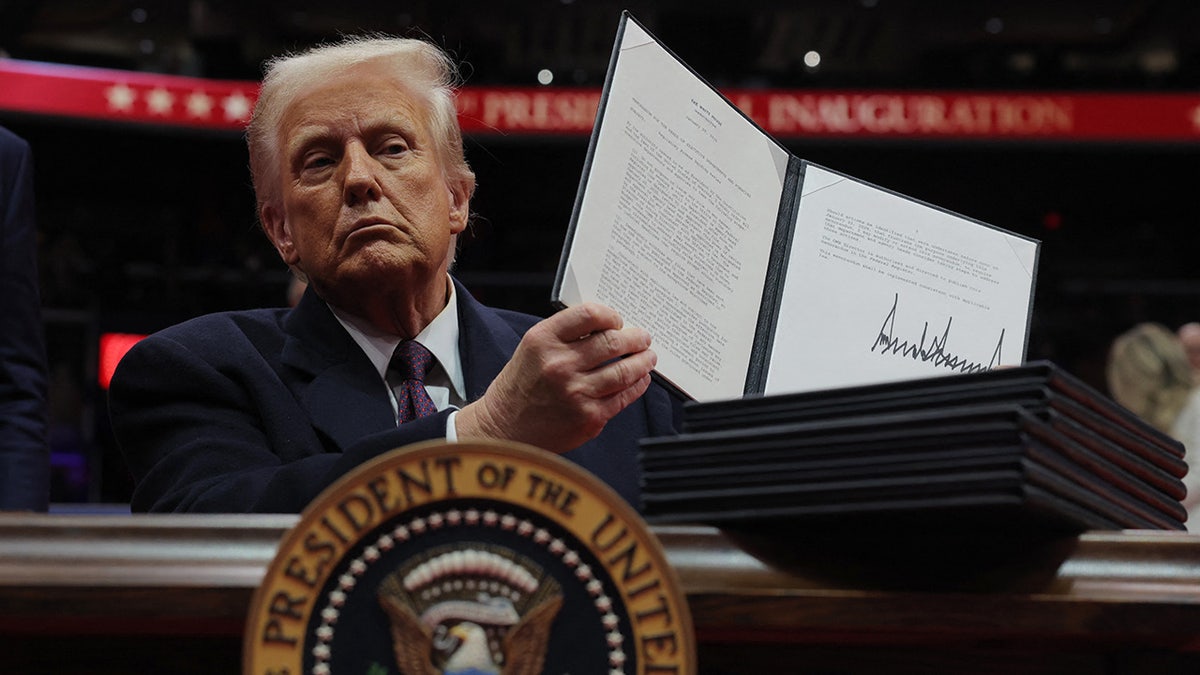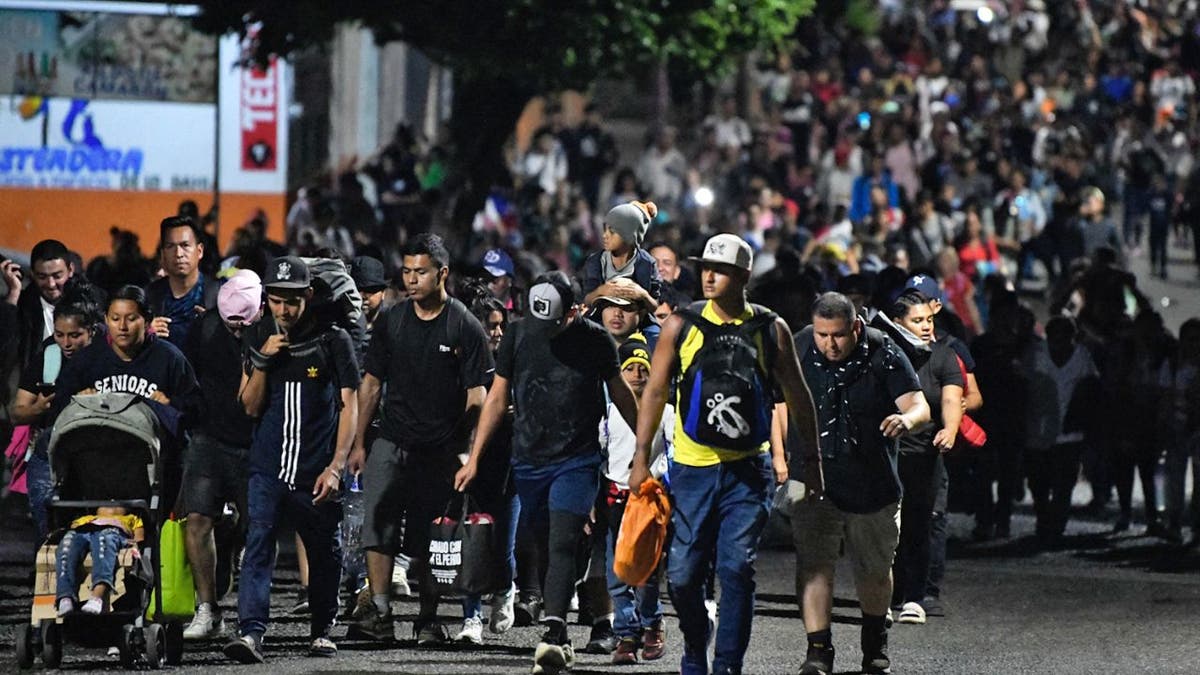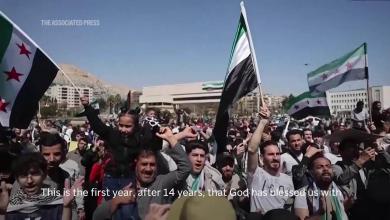Despite Trump, new migrant caravan heads to border

Just hours before President Donald Trump was sworn in on Monday, a migrant caravan of more than 2,000 people set off from deep southern Mexico with the intention of crossing into the United States
The convoy of men, women and children from various countries was seen traveling in the dark early Monday through the southern Mexican city of Tapachula, near the Guatemala border. Migrant workers carry school bags and backpacks, while migrant parents push strollers or carry children on their shoulders.
According to Border Report, this is at least the tenth largest caravan to emerge from Tapachula since the U.S. election. It takes an adult migrant about 16 days of non-stop walking to reach the southern border.
On January 20, 2025, a caravan of migrants marched toward the U.S. border in Tapachula, Chiapas, Mexico. (ISAAC GUZMAN/AFP via Getty Images)
Trump to deploy troops to border, end Biden parole policy in first-day series of executive orders
The caravan continues to move forward despite a series of executive orders signed by Trump on Monday to crack down on illegal immigration. He also declared a state of emergency at the national border.
In an order, Trump directed the federal government to resume construction of the border wall, which has been largely dormant under the Biden administration. The order also ends Biden-era parole policies, including the use of the CBP One app to parol immigrants into the U.S.
Erkin Torres, a migrant from Colombia who was part of the caravan, said he did not believe Trump’s actions could replace the United Nations and reasoned he believed he had a right to apply for asylum.
“Just like when Donald Trump came to power, he couldn’t get beyond the United Nations, you know? Unity,” Torres told Reuters.
“The world is intact and supporting us because we have one cause: better economic stability and a better future for the children out there.”
Maria Leddis, another immigrant from Cuba, said that even though the CBP One app is offline, the new U.S. administration will still provide immigrants with a way to enter the United States.

President Donald Trump issued his second executive order during the Inauguration Parade inside Capital One Arena on January 20, 2025, on Inauguration Day of his second presidential term in Washington, DC. (Reuters/Carlos Barria)
Trump’s Homeland Security picks Noem to pledge to end immigrant use of controversial app on ‘Day One’
“Well, we feel very sad because our goal was to get in, but it breaks our hearts to know they won’t let us in,” she told Reuters. “But we thought if it didn’t apply through CBP One, he would set up another way and we would get in.”
Migrants form caravans because they believe there is safety in numbers, since it is difficult or impossible for immigration agents to detain large groups of hundreds of migrants. Some are hoping for a ride to help them make the journey, while others will be trekking to the southern border in sweltering heat.
Many of the caravans disbanded after just days of departure, and the Mexican government said it had been trying to break them up amid Trump’s pledge to impose huge tariffs on Mexico if the influx of migrants was not stemmed.
Elsewhere, migrants waiting for appointments through the app were stuck at multiple locations on the Mexican side of the southern border.

Migrant workers carry school bags and backpacks, while migrant parents push strollers or carry children on their shoulders. (Isaac Guzman/AFP via Getty Images)
Click here to get the Fox News app
In addition to canceling the CBP One app, Trump also ordered government agencies to restore the Migrant Protection Protocols (MPP), the “Remain in Mexico” policy. The policy during Trump’s first term required migrants to remain in Mexico during their asylum hearings, but was ended by the Biden administration.
Another order directs the deployment of U.S. troops to the border under U.S. Northern Command to prioritize U.S. borders and territorial integrity in strategic planning.
President Trump has also designated international cartels and organizations such as MS-13 and the bloodthirsty Tren de Aragua as Foreign Terrorist Organizations (FTOs) and Specially Designated Global Terrorists (SDGTs). The FTO designation allows for targeted action against members, including financial penalties.
Reuters contributed to this report.


